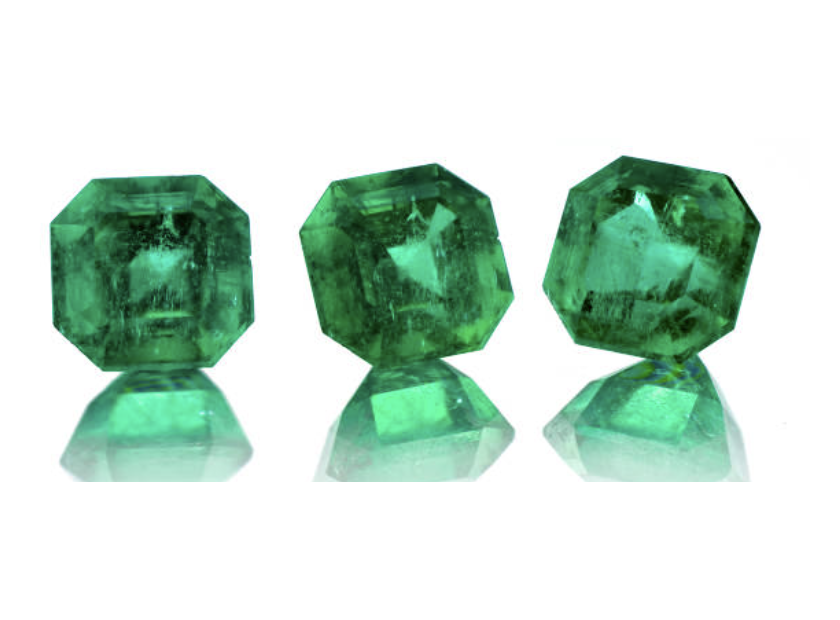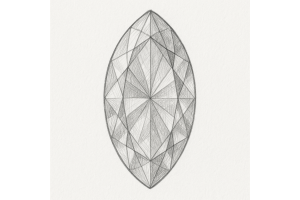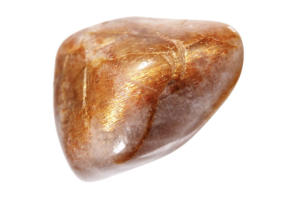GBP
/
GBP
/
Shipping to:
Currency:
Emerald: Explore the Lush Beauty of May’s Birthstone
May, a month of burgeoning life and vibrant renewal, is adorned with a birthstone that captures the very essence of spring's lush beauty—emerald. Revered for its rich green hues and timeless elegance, the emerald has been cherished for millennia, symbolizing rebirth, love, and wisdom. In this blog, we explore the captivating world of emeralds, from their ancient origins to their modern allure, making them the perfect gem for those born in May.
Unveiling the Origins
The word emerald comes from the Greek smaragdos, meaning green stone, a testament to its most defining characteristic. These exquisite gems are a variety of the mineral beryl, colored by trace amounts of chromium and vanadium.
Historically, the finest emeralds were mined in Egypt's Cleopatra mines, where they were prized by pharaohs. Today, Colombia produces the world's most coveted emeralds, renowned for their deep, vivid green. Other significant sources include Zambia, Brazil, and Afghanistan, each yielding stones with distinct qualities.
Myths and Legends
Emeralds have long been steeped in myth and mysticism. The Incas and Aztecs worshipped them as sacred stones, while ancient Egyptians believed emeralds represented eternal life and were buried with them for protection in the afterlife.
In medieval Europe, emeralds were thought to ward off evil spirits and reveal truths. They were also associated with fertility and fidelity, making them popular in betrothal gifts. Legend even claims that the Holy Grail was carved from a single colossal emerald.
The Spectrum of Green
Unlike diamonds, which are prized for their clarity, emeralds are celebrated for their color. The most sought-after shade is a deep, velvety green with a slight bluish undertone, often called Colombian green. Variations include:
- Zambian emeralds: darker with a cooler tone
- Brazilian emeralds: lighter and more yellowish-green
- Trapiche emeralds: rare, with a striking six-point radial pattern
Natural inclusions, known as jardin (French for garden), are common and add character, though flawless emeralds are exceptionally rare.
Emerald Cuts and Styles
Due to their fragility, emeralds are typically cut into shapes that minimize stress. The most iconic is the emerald cut, a rectangular step-cut that enhances color and reduces chipping. Other popular styles include:
- Oval: maximizes carat weight
- Cushion: softens the gem's edges
- Cabochon: smooth, domed cut for opaque stones
Emeralds are often set in vintage-inspired or art deco jewelry, paired with diamonds or yellow gold to accentuate their lush hue.
Healing Properties and Symbolism
Beyond their beauty, emeralds are believed to possess metaphysical properties:
- Promoting emotional balance and soothing stress
- Enhancing intuition and mental clarity
- Symbolizing hope, renewal, and unconditional
In Vedic astrology, emeralds are linked to Mercury, aiding communication and intellect.
Emeralds in Jewelry
From statement rings to delicate pendants, emeralds lend a touch of sophistication to any piece. They are a favorite in royal collections, such as the Cambridge emeralds worn by the Duchess of Cambridge.
Ethical sourcing is increasingly important, with many jewelers offering traceable stones from responsible mines.
Caring for Emeralds
Emeralds require gentle care due to their brittleness:
- Clean with lukewarm water, mild soap, and a soft brush—avoid ultrasonic cleaners.
- Store separately to prevent scratches.
- Re-oil periodically (many emeralds are treated with oils to enhance clarity).
Conclusion
The emerald, May's birthstone, is a gem of unparalleled depth and history. Whether chosen for its mesmerizing color, legendary symbolism, or personal significance, it remains a timeless emblem of nature's splendor. As May unfolds in a riot of green, let the emerald's radiant glow remind you of growth, harmony, and the enduring beauty of renewal.








